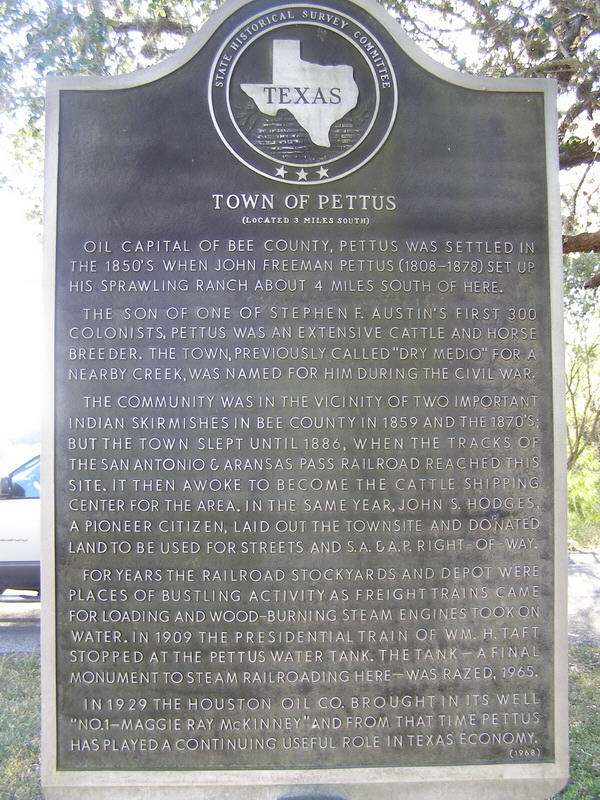Town of Pettus
 On U.S. 181 in Roadside Park North of Pettus
On U.S. 181 in Roadside Park North of Pettus
Oil capital of Bee County, Pettus was settled in the 1850's when John Freeman Pettus (1808-1878) set
up his sprawling ranch about four miles south of here. The son of one of Stephen F. Austin's first 300 colonists, Pettus
was an extensive cattle and horse breeder. The town, previously called "Dry Medio" for a nearby creek, was named for him
during the Civil War. The community was in the vicinity of two important Indian skirmishes in Bee County in 1859 and the
1870's, but the town slept until 1886 when the tracks of the San Antonio & Aransas Pass Railroad reached this site. It
then awoke to become the cattle shipping center for the area. In the same year, John S. Hodges, a pioneer citizen, laid
out the townsite and donated land to be used for streets and S.A.& A.P. right of way. For years the railroad stockyards
and depot were places of bustling activity as freight trains came for loading and wood-burning steam engines took on
water. In 1909, the presidential train of William H. Taft stopped at the Pettus water tank. The tank - a final monument
to steam railroading here - was razed, 1965. In 1929 the Houston Oil Co. brought in its well, "No. 1 Maggie Ray
McKinney," and from that time Pettus has played a continuing useful role in Texas economy.

